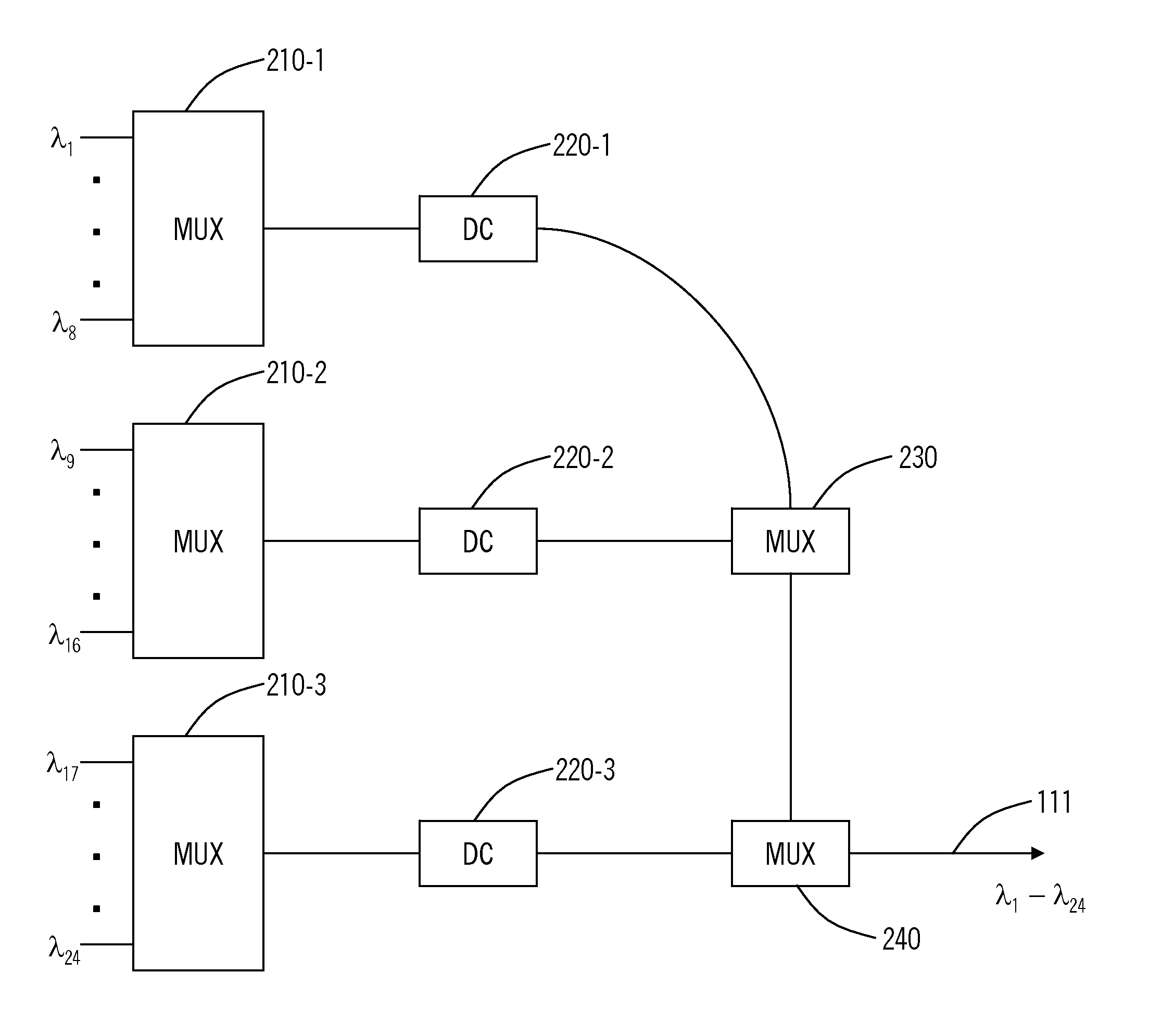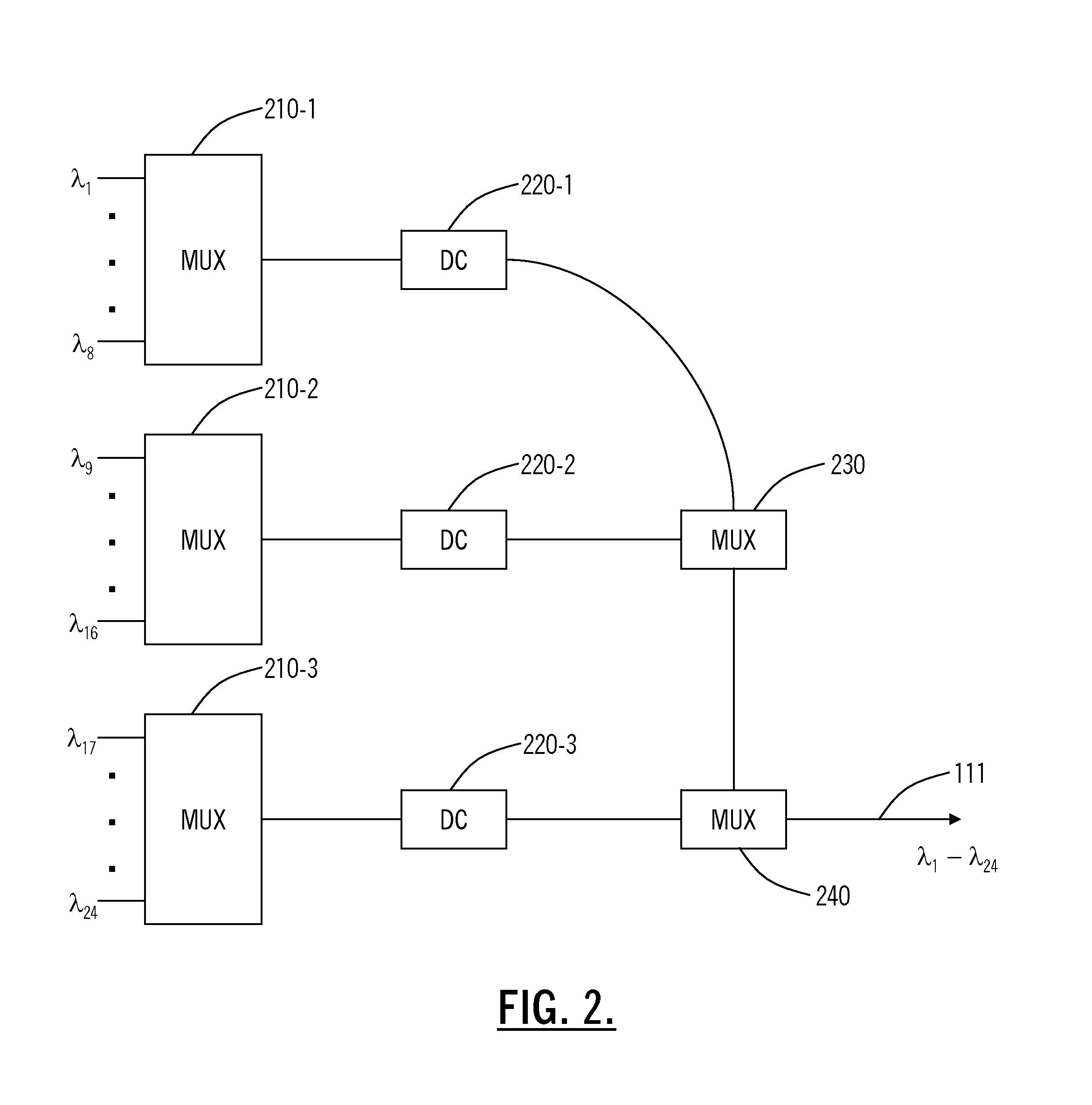WDM system having chromatic dispersion precompensation
a chromatic dispersion and precompensation technology, applied in the field of chromatic dispersion precompensation systems, can solve the problems of chromatic dispersion of 40 gbit/second cs-rz signals, degrade receiver sensitivity, and relatively high bit error rates
- Summary
- Abstract
- Description
- Claims
- Application Information
AI Technical Summary
Benefits of technology
Problems solved by technology
Method used
Image
Examples
Embodiment Construction
[0014]Chromatic dispersion in a high speed CS-RZ WDM transmission system is reduced by providing tailored “precompensation” for individual and / or groups of optical signals. Such precompensation is achieved by passing the optical signals through a dispersion compensating fiber or other dispersion compensating element prior to multiplexing the signals onto a single optical fiber. Additional dispersion compensation can be performed in optical amplifiers and within an optical demultiplexer downstream from the optical multiplexer.
[0015]FIG. 1 illustrates WDM system 100 consistent with an aspect of the present invention. WDM system 100 includes an optical combiner circuit 110, which receives a plurality of optical signals from transmitters 108-1 to 108-n, and combines the optical signals onto an optical communication path 111. The optical signals often carry data at rates of 40 Gbits / second conforming to SDH STM-256 and / or SONET OC-768 protocols. The optical signals next pass through a pl...
PUM
 Login to View More
Login to View More Abstract
Description
Claims
Application Information
 Login to View More
Login to View More - R&D
- Intellectual Property
- Life Sciences
- Materials
- Tech Scout
- Unparalleled Data Quality
- Higher Quality Content
- 60% Fewer Hallucinations
Browse by: Latest US Patents, China's latest patents, Technical Efficacy Thesaurus, Application Domain, Technology Topic, Popular Technical Reports.
© 2025 PatSnap. All rights reserved.Legal|Privacy policy|Modern Slavery Act Transparency Statement|Sitemap|About US| Contact US: help@patsnap.com



